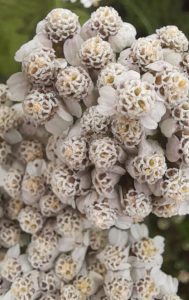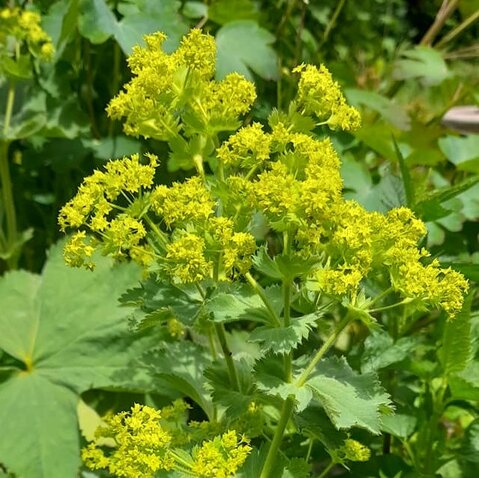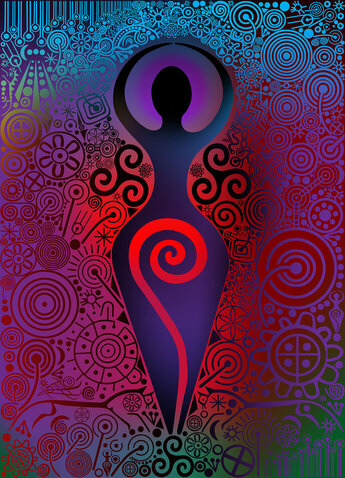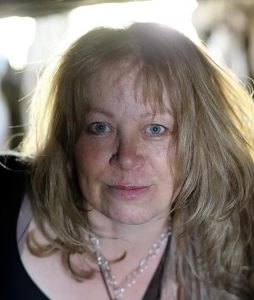Last Moon Blood – Cerridwen’s Menopause Medicine Wheel

Image by Gretta Bartoli from Pixabay
Edwina Hodkinson Bsc(Hons) – Medical Herbalist
Member of the National Institute of Medical Herbalists
Edwina continues her journey around Cerridwen’s Menopause Medicine Wheel
The midlife woman is bleeding. Menstrual blood that comes fast and profuse from between her legs and it won’t stop. It’s bright red and comes with big clots, staining her clothes and draining her energy. Sometimes she feels she is going to bleed to death and she is afraid to leave the house. Her periods are irregular, sometimes with spotting in between. She’s been told it’s perimenopause and just can’t wait for her periods to stop forever. Her friend is on the countdown. A few months since her last period and each month she is in hope that she will get to a year without menstruation and can then class herself as postmenopausal.
Cerridwen as womb Goddess and menopause guide
Cerridwen watches over her daughter, knowing that as the womb prepares to stop its blood flow forever, menstruation can be heavy and erratic, taking the woman to her edges as she waits for that final moontime. Cerridwen, as a mother, knows that this final bleeding means that the woman cannot have any more babies, ever. Whether or not she has had children this can sometimes be a time of loss and grief. Many women go through these feelings of grief during menopause whether they never had children, already have them or never wanted any. The feelings of grief can also be as a result of recognising the end of something that was a massive part of a woman’s life, moving on and the loss of youth. Cerridwen as Goddess of death, rebirth and creativity can support a woman through this transition towards the wise woman phase of our lives. Cerridwen is a womb Goddess and it was in her womb that Gwion Bach was transformed to Taliesin. Her cauldron can represent the cosmic womb of the divine mother Goddess; place of change, renewal and rebirth. As midlife women we enter her dark, nourishing, transformative womb to prepare for our own rebirth. As menopausal women it is through our silent, still womb or womb space we can become creative, wise and powerful in other ways. In my work with women’s groups I find it interesting that after menopause many women forget about their womb, not realising it can still have the ability to hold memories, both good and not so good.
Perimenopause
Perimenopause is defined as starting from when the first symptoms of the menopausal transition appear up until a year after the last period, when a woman can declare she has reached “menopause”; meaning the permanent end of menstruation. It’s difficult to know when that last period is, unlike that first period which is very evident in a teenage girl. It’s difficult to celebrate or mourn this last period, unless it’s a surgical or pharmaceutical menopause, and women have lots of feelings around the ending of periods.
My own experiences of early perimenopause were of very heavy, irregular periods that I found not only messy and painful, but sometimes frightening because of the sheer loss of blood. I was in my mid-forties, doing my degree and going through a marriage break-up, as well as struggling with a disastrous new relationship. It was an extremely challenging time that led me to an exploration of perimenopause. I was able to focus my dissertation on the impact of stress on the perimenopause spending my final year looking at research papers and the work of experts.
With the help of my herbal tutors, I worked with diet and herbal medicine in a way that made a massive difference to my life and led me to do a perimenopausal diet for many months, which included going sugar-free and eating lots of phyto-oestrogens. This made a big impact on my work as a medical herbalist and informed the way I work with many menopausal women.
Heavy Periods
Research shows that menstrual heavy blood loss or menorrhagia, along with menstrual irregularity, leads to more medical consultations and investigations than hot flushes and is a great worry to women. It’s a symptom that isn’t often recognised as being perimenopausal and can cause anaemia, fatigue and affect quality of life. It can be very embarrassing, due to leakages and sometimes excessive blood loss can stop a woman even leaving the house. In cases of Menorrhagia it’s good to visit the doctor to get a diagnosis. In my case, a uterine ultrasound scan diagnosed fibroids. Some doctors see the value in getting hormones checked and other doctors feel that due to the fluctuation of hormones through the month this is not helpful. Conventional medicine can offer many solutions to perimenopausal heavy bleeding, which can include a mirena coil. It’s my personal feeling that women need informative choices of the options, whether they are offered by orthodox or natural medicine. If they are choosing natural ways of managing Menorrhagia, then it’s good to work with an experienced Medical Herbalist or natural health practitioner.
The Imbalance of Hormones
Early on in perimenopause, hormones can fluctuate wildly with follicle stimulating hormone (FSH) increasing. It is thought that this can stimulate ageing ovaries to produce more oestrogen. This overproduction of oestrogen can result in multiple follicle production in the ovary, which, unable to mature, causes a failure to ovulate, stopping production of the corpus luteum producing progesterone. This progesterone insufficiency, combined with high and erratic levels of oestrogen, can cause a proliferation in the lining of the uterus and lead to flooding. Erratic oestrogen and low progesterone can also cause other symptoms of the Perimenopause such as hot flushes, mood swings and irritability. Stress, burn out, processed foods, sugar, candida, ill health, nutritional deficiencies and a poorly functioning liver can also contribute to hormone imbalances.
Managing heavy periods
Managing menorrhagia can be complex and needs to be worked with holistically on many levels. Blood tests and scans are good to start with as it is helpful to see if there are any underlying physiological reasons for heavy periods. Reasons may include, for example, fibroids or thyroid imbalances and if blood iron levels are low these may need to be corrected, as anaemia can contribute to heavy blood loss.
Diet can help massively to improve hormone balance and this is discussed in more detail in other articles on Cerridwen’s menopausal medicine wheel. Supporting the adrenal glands and helping with stress management is helpful. Herbs that can balance hormones include Red Clover, Sage, Mugwort (care needs to be taken with heavy blood loss), Black Cohosh, Peony and Vitex agnus castus. Herbs that can improve liver function to help excrete old broken down hormones include Dandelion root and Milk thistle. I like to support women with womb tonic herbs, as well as herbs that can also reduce heavy blood loss in the womb.

Yarrow – Achillea millefolium
Family: Asteraceae
Description: It’s a perennial herb with feathery dark green leaves and flat composite flower heads that are white or sometimes pink.
Habitat and Distribution: Native to the British Isles and found all over the UK along roadsides, in meadows and hedgerows.
Parts used: All parts; flowers and leaves and roots.


Actions: Haemostatic, Digestive bitter tonic, anti-microbial, astringent, antispasmodic, analgesic, antihistamine, emmenagogue, expectorant, decongestant, anti-inflammatory, alterative, diaphoretic, diuretic.
Uses in the female reproductive system: Yarrow can help regulate the menstrual cycle. It can help to reduce heavy menstrual bleeding and manage premenstrual syndrome (PMS). Yarrow can help break up stagnant blood in the uterus, toning the mucous membranes of the reproductive tract. Yarrow is good for the irregular periods of young girls as well as the mental restlessness of menopause, inflammation of the ovaries, prolapse of the uterus, uterine fibroids and vaginal discharge.
Maria Treben, the famous Austrian herbalist, recommends Yarrow sitz baths for uterine fibroids: 100g of cut herbs steeped in cold water overnight, brought to the boil in the morning and poured into the bath in which you immerse your body. Many attest to the effectiveness of this if done twice a week. Research from Iran shows that Yarrow is effective in reducing menstrual pain.
Contraindications – Pregnancy and some people may have allergies to the asteracaea family.
Lady’s Mantle – Alchemilla vulgaris/A. mollis
Lady’s Mantle is a perennial native to the UK and Europe but widely cultivated for gardens. It’s traditionally dedicated to the Virgin Mary as the leaves are thought to resemble her cloak. In Northern European cultures it was dedicated to Freya. It has been a sacred herb to Germanic peoples for a long time, especially in Iceland, and always a sacred strengthening herb for women.


Family: Rosacea
Parts used: Root, leaves and flowers.
Actions: Astringent, haemostatic (stops bleeding), anti-inflammatory, diuretic, emmenagogue, nervine, vulnerary, febrifuge.
Female reproductive system: A principal herb of choice for all conditions affecting the womb and ovaries. Its astringent and anti-inflammatory properties are useful for any conditions of the female reproductive tract. It strengthens the tone of the womb and is good for heavy, painful and prolonged periods, especially in perimenopause. It’s helpful when fibroids increase menstrual flow and traditionally was used to help shrink fibroids. It tones and strengthens the uterus and pelvic floor muscles. This would be helpful infused in a bath, especially with Yarrow. Lady’s Mantle can help regulate hormones and reduce premenstrual syndrome. It contains salicylic acid and can help women cope with the cramping pain of menstruation. During perimenopause, Yarrow can help balance hormones and reduce sweating.
Elizabeth Brooke says in her book A Woman’s Book of Herbs that it should be used when a woman is experiencing trauma to the uterus such as after surgery, abortion, miscarriage, use of an intrauterine device (IUD), and on a psychological level can help women feel protected and secure.
Lady’s Mantle also has an affinity for the breasts, helping reduce breast discomfort premenstrually. This can be taken internally but also used as a poultice or in an infused oil. It is also said that Lady’s Mantle can help firm up sagging breasts when made as a cream or oil.
Last moonblood
On my own last bleed, I knew intuitively that there was something different about it and put the last drops of moonblood on the base of my magical staff. Whilst it is difficult to know the last bleed it may help to honour these last moontimes by giving our blood back to the earth. We can do this with ceremony, either with gratitude for the gifts of our womb and/or to bring cleansing, letting go of loss, the memory of invasive procedures, abuse, challenging relationships and for healing. Moonblood carries with it memory and emotion. Many women don’t have a womb but the space is still there and just as sacred. If the time of our last moonblood is a distant memory we can still honour our womb or womb space. For many of us it is the place where our babies were nurtured and birthed from . Our womb is part of our herstory of who we are and we still have, through it, the connection to the great cosmic womb and the earth womb, which makes women so powerful and sacred.

Image: Fire Goddess, ©Peter Yankowski
I have been initiated into the 13th Munay-Ki rite of the womb, which is passed on by a lineage of women through the spirit of the Amazon jungle to a woman shaman who would be responsible for sharing it. It is profoundly healing and, once you have been initiated, you can initiate other women.
“The Womb is not a place to store fear or pain; the womb is to create and give birth to life”. The Rite of the Womb
Edwina Hodkinson. BSc (Hons) MNIMH – Medical Herbalist and second spiral Priestess of Cerridwen

I have been a medical herbalist for 12 years, having graduated with a first-class degree in Herbal Medicine at Central Lancashire University. I work as a consulting medical herbalist in private practice in Bolton or via zoom, specialising in women’s health as well as working with community groups to help reconnect them to nature and the medicines growing around us. I also facilitate Wise Woman Rising workshops which help women to reconnect to the wise knowledge of menopause. I have a deep love for our native wild medicines and like to work with them as much as possible, which includes teaching local people about local herbs in a way that helps them reconnect to the world around them in a deeper way.
I have a background in nursing as well as having been a complementary therapist for over 25 years specialising in cancer care and working with the very sick. I am a forager, Clinical Reflexologist for 26 years, aromatherapist, Shamanic practitioner and Breath work coach.
websites: edwinahodkinsonherbalist.co.uk and weedsandwildmedicine.co.uk
Images by Edwina, unless otherwise credited
Medical Disclaimer
The Herbal Allies are shown here as part of a larger pharmacopoeia of herbs typically used by herbalists to support women during the menopausal transition and beyond and will be explored more in further articles. They are not prescriptive in any way, nor is it suggested you use them for particular issues and menopausal symptoms. Before using any herbs it’s best to consult with a Medical Herbalist or suitably qualified practitioner as not all herbs are suitable for all women and may interact with medications.